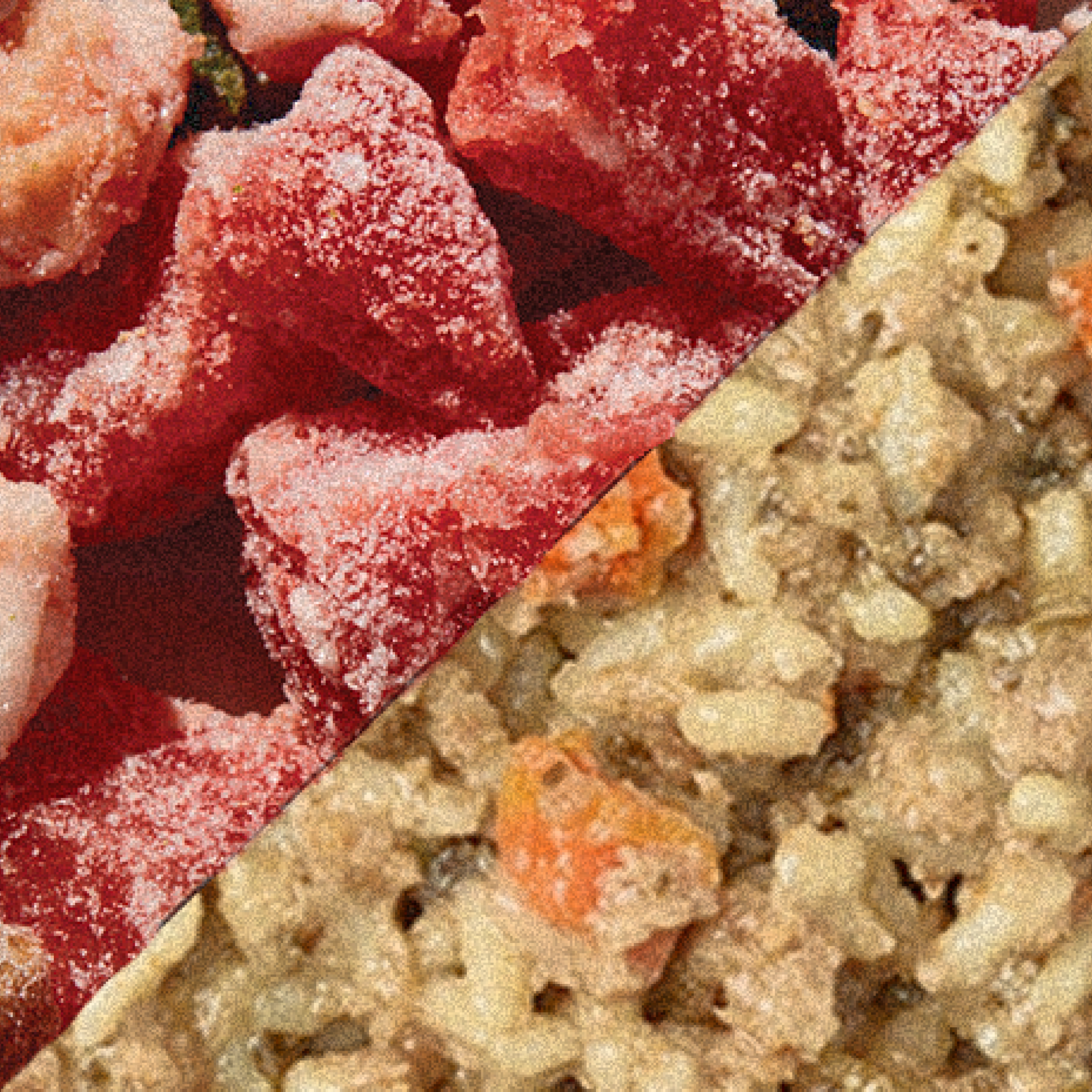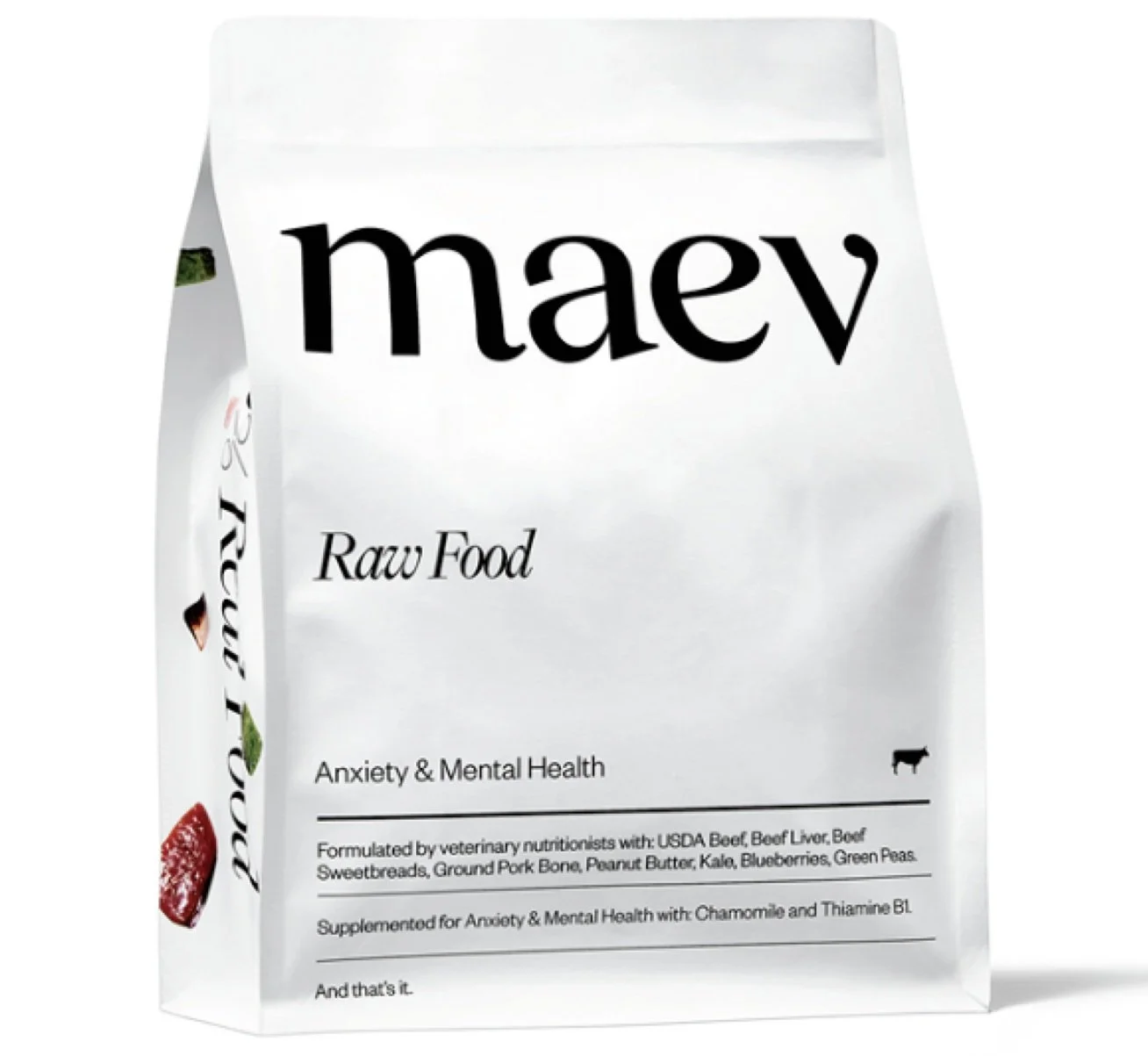Debunking the difference: Raw vs. Fresh food
Dog owners everywhere love both. So which one is actually best for your dog?
In recent years, raw diets and fresh diets have become increasingly popularized alternatives to traditional kibble — both providing significantly better health benefits and long-term wellbeing for dogs.
So what exactly are the differences between raw and fresh diets, and which one should you choose for your dog? Here’s your quick one-pager on the major differences between raw and fresh food diets — and why raw diets still come out on top.
While cooked fresh food is substantially healthier than kibble, your dog was designed to eat raw.
Unlike humans, dogs are biologically primed to thrive off a raw diet. While it’s true that “domesticated” options like fresh diets are less processed and harmful than mass-produced kibbles, they still don’t meet a dog’s full nutritional needs.
Raw food is completely unprocessed.
Raw proteins and produce are served in their wholly natural complex states, so your dog absorbs the most nutrition possible. On the other hand, fresh food is cooked and therefore processed, which causes nutrient degradation and loss.
Fresh food is more similar to kibble than you think.
Like kibble, fresh diets are low in protein and high in starches that worsen dental issues and prevent your dog’s natural bacteria-fighting abilities from mobilizing. Alternatively, raw diets are nutritionally balanced to fulfill a dog’s actual biological needs. A typical raw diet makeup looks like:
70–80% lean, raw muscle meat (think cuts of beef and chicken)
10% raw edible bone (never cooked, because bones become brittle and choking hazards)
10% organ meat (liver, kidney, or other hormone-secreting organs)
5% vegetables, which provide micronutrients (bonus points for puréed greens that support proper digestion.
Raw food improves dental health. Fresh food does not.
Diets high in starchy carbs cause extreme plaque and tartar buildup in your dog’s mouth, and encourage bad bacteria to stick to their teeth. Raw diets are almost 0% starch, while fresh food is closer to 60%. Additionally, raw meat retains the naturally-occurring enzymes that protect your dog’s mouth from bad bacteria and other pathogens.
The cherry on top? We serve Maev Raw Food frozen to add another layer of protection for your dog’s teeth. Frozen textures help naturally and gently exfoliate leftover plaque and tartar buildup from your dog’s teeth every time they enjoy a meal.
Raw diets work faster for your dog’s wellbeing.
Unlike any other diets, Maev Raw Food is scientifically proven to produce real health benefits in 30 days.
Raw food naturally balances your dog’s gut flora and pH levels for stabilized energy, stronger immunities, less tartar buildup, fresher breath, and reduced allergies and itchiness. So your dog’s body can work like it’s meant to.
See results in 30 days when you make the switch.
Improved digestion and naturally balances weight
Reduced allergy symptoms
Less begging & overeating
Less hyperactivity & anxiety
Improved dental health, cleaner teeth & fresher breath
Strengthened immune system
Fewer trips to the vet




